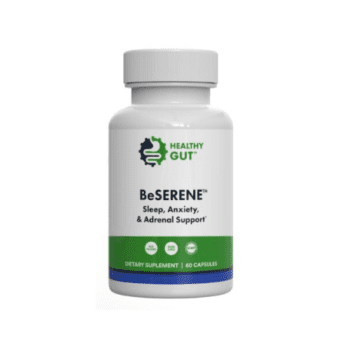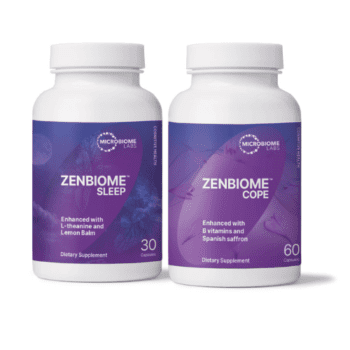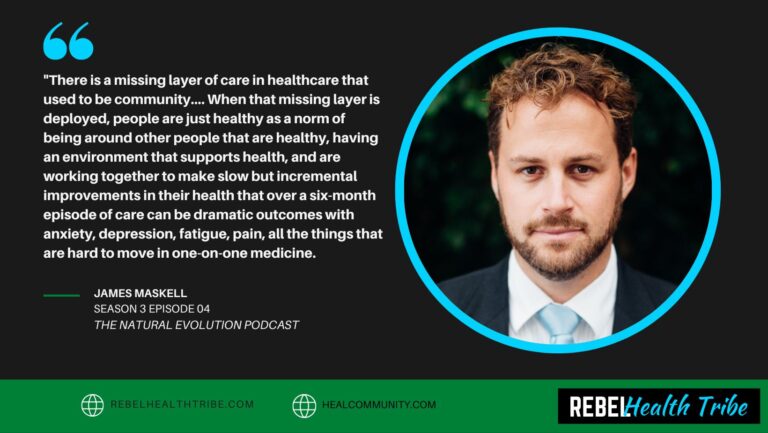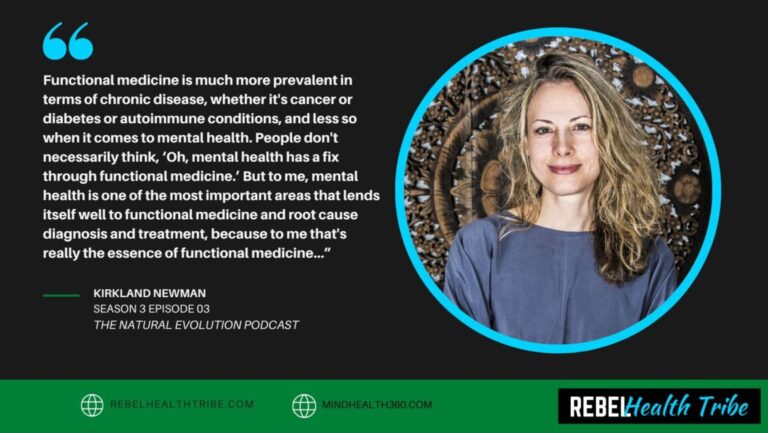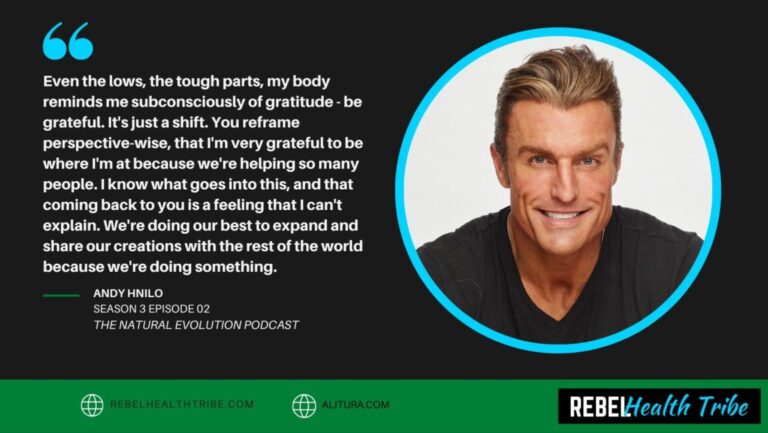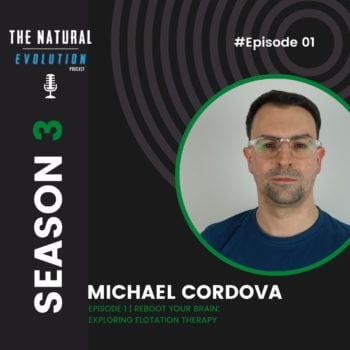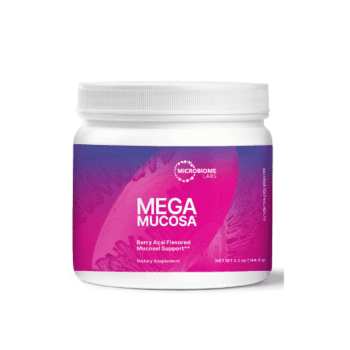
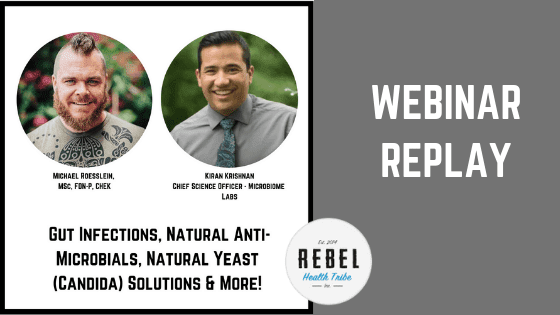
More Posts from
Gut Microbiome & Digestion

Meet Your Microbiome: The Human Microbiome and How to Optimize It
Meet Your Microbiome: The Human Microbiome and How to Optimize
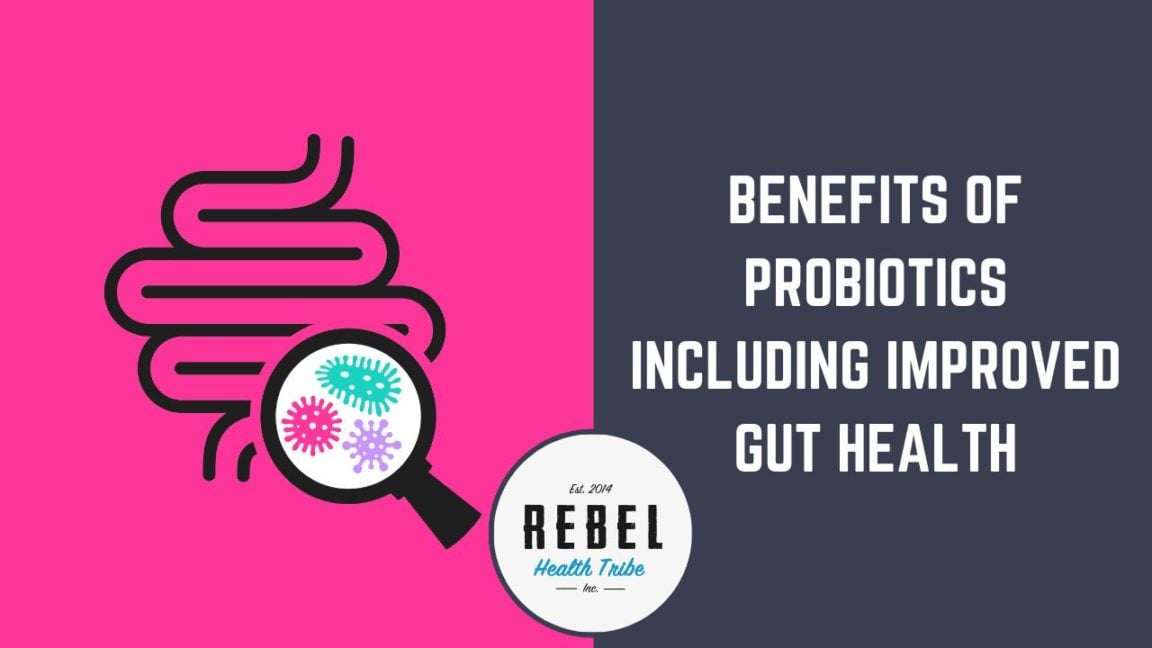
Benefits of Probiotics Including Improved Gut Health
Benefits of Probiotics Including Improved Gut Health “Probiotics” has become

Gut Microbiome Health and the Gut-Immune System Connection: Part 2 Lower GI
Gut Microbiome Health and the Gut-Immune System Connection: Part 2
Webinar Video Transcribed
Michael: The spinning ball, we are live. Hey everyone, happy Thursday, I think. Is it Thursday? Yeah, Thursday. I am here with our favorite Microbiologist Kiran Krishnan, thank you for joining us, man.
Kiran: My pleasure. It feels like it’s been a long time.
Michael: Yeah. We used to do these every three weeks, I think. Now it’s been a few months and it feels like a year.
Kiran: Right, totally. Yes, it does.
Michael: I wonder how many countries you’ve been in since you were last on.
Kiran: It’s crazy. At least 15.
Michael: Yeah.
Kiran: Yes, it’s been great.
Michael: What’s been your favorite one the last few months?
Kiran: I was in Paris a couple weeks ago and I always love Paris. It’s just something about the city, and the food, and the people. It’s such a refreshing place to go to. When you see the Eiffel Tower, the Arctic Triumph, they look like celebrities because you see these things all over the place.
Michael: Yeah, TV, postcards.
Kiran: Totally. You’re like, “Wow, I’m in Paris actually.” That was really fun, but I get to go to New Zealand twice this year. I’m speaking in New Zealand twice and I’ve never been, so I’m really looking forward to that. One is in a couple of months, and then the other is in September. Oh, and Romania too. I’ve never been to Romania, so I’m speaking at a big gastroenterology conference there.
Michael: Do you have a big map that you mark them all off on?
Kiran: No. You know, I should. I wish I was that organized and interesting, but I really should. That’d be awesome to do that.
Michael: Well, we should introduce you a little. I do have a lot of friends either from New Zealand, live in New Zealand, or go to New Zealand a lot if you want any tips for wherever you’re going to be.
Kiran: Yeah, I would love [crosstalk 00:01:39]
Michael: In the digital entrepreneur world, New Zealand is very popular to go spend some time in, and live there, and work because it’s gorgeous and the people are super nice. So, there might even be some on here. There’s always Kiwis on our things. I hope that’s an endearing term, I don’t know that, so maybe I shouldn’t say that. Anyways, Kiran, you’re a chief science officer at Microbiome Labs, and also studied microbiology at University of Iowa. You want to just tell people a quick brief little snippet on how you became so interested in this subject, and why you do what you do?
Kiran: Yeah. I mean, as a microbiologist I’ve always had an affinity for bacteria. It’s interesting when you start your microbiology studies and then when you get into the research side, a lot of what you’re using bacteria for is to study disease and bacteria that cause disease. But then you’re also trying to learn how cells function by looking at bacteria, because effectively, all of our cells are basically made up of ancient bacteria. Right? So, we really get to understand cellular function by studying the function of bacteria, which can be controlled and so on. I’ve always had an affinity that bacteria plays a significant role in our lives. Then it wasn’t until the Human Microbiome Project started coming out with studies where we really saw it more definitively that bacteria really controlled virtually everything.
Kiran: To me, it was almost like a hurrah finally. Like, “Yes, now we really understand how bacteria could impact our system.” Then the most important part is we finally started looking at good bacteria, because most of what everyone knows is bad bacteria. So, we need to kill 99.9% of germs and microbes, and antibiotics, and we live in this very antibiotic world. So, it was very exciting to see the beneficial role that bacteria plays in the body. So, that was a natural fit for me and I jumped right in, both feet first, in all aspects of that probiotics, prebiotics, microbiome, and so on, and here we are.
Michael: Then it’s been chaos ever since. For those of you don’t know the joke where he was in different countries, getting ahold of this guy, he’s like an international man of microbiome mystery.
Kiran: The biggest nerd of them all.
Michael: Yeah, yeah. He’s always in a different state, or city, or country, or something whenever I try to talk to him. So, I’m seeing some people with some tech issues, frozen screen. Seems most people are fine. Hold on. If you’re having issues and you can’t see me, Chrome is usually better than Firefox. “Pressing the play arrow helped me.” Nice. Or press the play arrow. Okay. Yeah, rejoin if webinar isn’t working, if you reload browser. Okay. All right. Okay. All right, so hopefully enough people are seeing and hearing us, the numbers keep going up and people aren’t dropping off, so we’ll go with that.
Michael: Today, we’re going to talk about some chronic and acute gut infections, and I dropped little hints in the email about one little resilient friend of ours that lived for 25 million years in a bee, and tie that into bees also producing something that can help us. Which is funny, I was just at a conference this last weekend and met and chatted with Paul Stamets. He’s created a bunch of extracts now that are curing many of the diseases that are killing the bees. Reishi mushrooms, chaga mushrooms, and one that I can’t pronounce, but enough so that it had 100% effectiveness and they’re working on getting it out in mass distribution.
Kiran: Wow. They’re treating-
Michael: What was that?
Kiran: They’re treating bees with it?
Michael: Yeah. Every single bee on the planet is now infected with, it’s called mutated wing disease or damaged wing disease or something. It makes their wings grow deformed. So, their pollination period drops from nine days to three, so even the bees that aren’t being killed, they’re one-third as effective as they would be normally. His extract cured it completely. So, they’re reversing it generation by generation with the bees, the wings are going back to normal. There’s three other diseases that they’ve been working on, some of them were effective 700 to 1 reduction in viral load in the titers that they were taking on the bees with his mushroom extracts. Now they’re working on mass distribution and things of that nature.
Michael: There will be a recording the people who registered, yes. That’ll go out. Let’s get into that. These infections, whether they’re acute, I guess that would be almost like a food poisoning or something that’s causing symptoms right now or noticeable, versus chronic infections and over growths of various types of aggressive bacteria. Why are we seeing what seems like so much more of that now than we probably did even 20 years ago?
Kiran: Yeah. The biggest reason is the loss of diversity and ecological imbalance. So, we know that a very diverse microbiome protects against outside invading bacteria, viruses, and other forms of pathogens as well. The biggest issue is having that loss of diversity. One thing we have to be really cognizant of is that virtually every part of our body is covered with some sort of microbe or other. Even areas that were presumed to be sterile. For decades, we thought urine was sterile, we thought our blood was sterile, that there were no bacteria in there. 25 years ago, if doctor found a bacteria in your blood, they’d all be freaking out that you were on the road to sepsis.
Kiran: Now, we come to know that there’s about 1,000 bacteria cells per milliliter of blood, and we all have about 5,000, 500 milliliters of blood in our system. We know that our cerebral spinal fluid is full of viruses and bacteria, including papillomavirus, and herpes simplex, and all kinds of things we wish we didn’t have in our system, but everything is covered in microbes. So, there is a homeostatic ecology in all of these parts. The way an acute infection or a late infection can take hold is if you have a dysfunction in that homeostasis. The best that we can describe right now, the structure of the homeostasis is through looking at the diversity in the microbiome. As our microbiome diversity shrinks, we become way more susceptible to late infections and acute infections as well. We know, I mean, we’ve talked about so many times, all of the things in our ecosystem that creates that dysfunction in the diversity.
Kiran: One of the main ones now being, of course, Roundup and herbicides. We’re coming to recognize that those have a severe perturbation in our microbiome and shrink diversity quite a bit, but the other driver is food. We’re not eating a very diverse diet anymore and that makes us less diverse and makes us more susceptible to infections.
Kiran: Uh oh, you’re muted. You’re silent.
Michael: Yeah, I figured it out. I was typing to someone. So, you’re saying there’s no one answer. So, it can be-
Kiran: Well, it’s not a question of just being exposed to more things, it’s not a question of having a higher prevalence of pathogenic bacteria or viruses. That was some of the ideology that was going around, but now we’re starting to understand it’s really the lack of the other 99% of microbes that prevent the pathogens from taking hold. That’s really what’s causing the issue.
Michael: Yeah, that totally makes sense. A lot of the people in here have probably attended our webinars before, have seen you on presentations with us, and/or they’re very familiar with the Flagship probiotic you guys created, it’s got to be five years ago now.
Kiran: Yeah, we’re in our sixth year.
Michael: Wow, that’s crazy. MegaSporeBiotic, and its Bacillus spore forming organisms, and we’ve seen a lot of amazing results with thousands of people at this point. Which is pretty much what built our whole microbiome series of webinars, was all those people wanting to get more questions and more answers, and helping them out with stuff outside of using the spores and things like that. So, people are pretty familiar with those, especially in the functional medicine space now. I don’t think I go a day now on my own social media without seeing a friend or colleague of mine hosting you on something. Either on a summit, or an interview, or a webinar or something. So, a lot of people know. There’s one of the five … it’s five, right?
Kiran: Strains, yes.
Michael: There’s one that’s the superstar in MegaSpore that does a lot of the heavy lifting. For those who saw the email, that’s what I was referencing is a Bacillus subtilis organism, was found in the gut of a bee that was fossilized in amber for 25 million years. They were able to take it back out of the bee and bring it back to life?
Kiran: Yeah. A 25 million year old bacteria that was fossilized, they could still plate it, and it was still alive. That’s how robust this species of organisms is. When you look at Bacillus subtilis that were pulled out of glacial ice cores from two, three, four million years ago, they’re genetic homology to today’s Bacillus subtilis is 95% or greater. So, they’ve hardly changed over the last dozens of millions of years because they’re so well adapted to be in our environment, and then in particular, in our gut. They’re a really, really exciting bacteria. In the microbiology world, we’ve been studying and working with Bacillus subtilis as a tool almost in microbiology for decades. That and E. Coli are the two most well known bacteria inside and out in the world of microbiology.
Kiran: It’s so exciting to have one of the most robust subtilis bacteria that we’ve seen in the MegaSpore. We just finished a couple of studies with just the subtilis, and then with a combination of our subtilis and coagulants, that’s really interesting. We have this antibiotic induced dysbiosis model from the Shine model from the guys in Belgium. What we’ve been able to show is that when you treat the microbiome with a clindamycin, or in this case I think it was a Cipro, and the clindamycin being the fluoroquinolone, we found that there was a significant dysbiosis over a two week period. Then we were able to reverse most of that dysbiosis even within three weeks, just by adding the spores back in. We saw that effect with just the subtilis, but then with the subtilis and the coagulants mixed.
Kiran: Then of course, we’ve seen that now with MegaSpore with the Roundup study, where we’ve been able to create a significant dysbiosis with Roundup. But the subtilis is really potent at going in, identifying pathogens and bringing down the growth of pathogens. They’re going to be one of your best friends in terms of that intelligent antimicrobial effect. Oh, one more mention, we finished round one of our C. diff study at Cleveland Clinic. It’s going to be a two year long study with many different variables and all that. But the first variable was, can MegaSpore, as a probiotic, clear the C. diff infection? We saw that the MegaSpore cleared the C. diff infection relatively quickly, and then improved the integrity of the gut. Then, this is in the mouse model, it also increased the length of the GI tract, which suffers some sort of enteropathy when C. diff gets in there and starts messing up the lining and the structure of the intestines.
Kiran: All of these things lead to this idea that the subtilis, the spores in the MegaSpore, the consortium, together do an amazing job of attacking pathogens, bringing them down, bringing infectious bacteria down, and then reestablishing the actual structure of the intestinal lining and the intestines themselves.
Michael: That’s pretty wild. For those who don’t know, the class of antibiotics you’re referencing are pretty much the most aggressive virulent. The fluoroquinolones, is that how you say it?
Kiran: Yeah, fluoroquinolones. Yes.
Michael: Yeah, yeah. There’s whole entire Facebook groups of people who have gotten derailed-
Kiran: Yeah, [crosstalk 00:15:20] are horrendous. I mean, in fact somebody I know very closely, he’s older, but it’s a year now and he still has neurological issues from taking it. One of the most common things is tendon ruptures, your achilles tendon ruptures. I mean, it’s really a significantly toxic antibiotic and we see that when we’re using it in the microbiome models that it causes significant perturbations in a very short amount of time. But the good news is, you can rescue that. Somehow there’s a memory with how your microbiome is supposed to look like, and the spores when they’re in there, can facilitate that regeneration of the normal part of the population.
Michael: That’s fascinating. You guys, a while back, put out just the plain Bacillus subtilis in a high dose, because I don’t know how much subtilis is in a dose of MegaSpore, but it is one of five. Then we’ve been using the subtilis. So, there’s an HU58, which is high dose Bacillus subtilis. My wife, for those who don’t know or haven’t been watching our videos or stuff, went through a pretty serious autoimmune situation last year, and gut repairs obviously, at the heart of any approach to autoimmune. She had a lot of unneeded and unwanted results on her gut tests for infections and organisms and such. I think the only antimicrobials we used was the high dose Bacillus subtilis and then the MycoBalance, which we’ll talk about in a minute. But we didn’t use any others, no herbal carpet bombing approaches like I used to take with her protocol.
Michael: Can you speak on what the dosing difference is between what’s in the MegaSpore of the subtilis, and then what’s in the HU58? We have never carried it before because it’s more of a acute use type of product, it seemed, for certain situations, not necessarily as a maintenance type situation like MegaSpore might be. Can you just speak on the difference in the dosing, and then when it’s appropriate, when it’s called for, and when it might be wanted to be used?
Kiran: Yeah. In MegaSpore, the subtilis is at two billion CFUs per daily dose. That’s in two caps. That doesn’t all the wonderful things that MegaSpore does. But what we found is that if you have a serious infection issue, whether it’s latent, even acute, if for some reason you’re choosing not to use an antibiotic or your doctor doesn’t want you to use an antibiotic, it can significantly help even in acute conditions. A lot of people use it when they travel, if they end up with traveler’s diarrhea. It’s used as a prescription product in India and a bunch of other countries for antibiotic induced diarrhea and for traveler’s diarrhea as well. It is dosed at five billion CSUs of just the subtilis in the HU58 product, and that’s per cap. But the dosing instructions will have you take as many as two caps a day.
Kiran: So, you’d be taking as many as 10 billion of the subtilis. Now, the subtilis, I mean, it’s such a fascinating organism because a couple of the things that it does that’s really interesting, is of course, it can identify pathogenic or overgrown organisms and help bring down the growth of those. But one of the things that it does is it produces biofilms. It seems to cooperate with the good commensal bacteria, and basically protect them under a biofilm. The way biofilms work, and the vast majority of bacteria in your gut live in some sort of biofilm. The biofilms become this lattice or a network for bacteria to not only live under, but to communicate and share extracellular compounds and so on. So, biofilms are really important to maintaining a good, healthy microbiome.
Kiran: When you have a bacteria that can go in and create biofilms as it’s warding off the pathogens, you’ve got a microbe that can really stabilize your natural commensal bacterial microbiota. That’s a really significant impact of the subtilis. So, we use it like an intelligent antimicrobial. If you suspect that you have an overgrowth of something, if there’s an infectious bacteria, possibly even viruses and things like that, we send in and utilize the HU58 in the lieu of using antimicrobials or an antibiotic. In the case of people that might … foreseeable and things like that, that may choose to use it, rifaximin. Think of it as an intelligent antimicrobial, I carry it with me when I travel. In fact, I use prophylactically, one to two caps every day when I travel just in case.
Kiran: I’ve traveled with a lot of people, especially places like India and the Philippines where they’ve found themselves in a situation where they ate something that’s not agreeing with them. We’ve dosed them up with two, three caps of the HU58, and it’s taking care of the problem. Our philosophy always is, use bacteria to control other bacteria, because they do it in a much more intelligent way. In some cases, you will need an antimicrobial and antibiotic, but if you’re dealing with this problem yourself and you’ve got what you believe is an infectious condition or you’re working with your doctor and he or she believes that it’s an infectious condition, the HU58 can be really helpful.
Michael: Yeah. We did I think six months for her, for all that stuff, where we were using it. Now it’s occasionally if somebody’s not feeling well. I’ve been taking it while we had a huge stock of it, and I travel not quite as much as you, but quite a bit. I throw one in every time that I’m going to be on a flight, or eating somewhere strange, or being in a weird place. So, we are going to … a lot of our audience, like I said, make the rounds now on the internet, so a lot of people have been asking us to carry the HU58 so that they can order it. That’s going to be in our shop now and that’s part of the reason why we wanted to provide this education around it, so that people understood what the difference is, when it would be usable, when appropriate.
Kiran: I should mention, when you’re starting MegaSpore, let’s say you’ve never taken it and your gut is messed up, you suspect there is an overgrowth of some sort or you’re working with the doctor and whatever the symptomatology you’ve looked at or test you’ve looked at and you suspect there’s an overgrowth of something not favorable. You can actually start the MegaSpore and the HU58 at the same time. Of course, you want to taper on those and make sure that you don’t have really severe die off, but surprisingly, the die off with HU58 is really minimal. I’m not sure how or what that mechanism is where it minimizes the type of Herxheimer reaction that people typically get when you start getting rid of bad bacteria, but the die off is really minimal.
Kiran: You can either start them both at the same time, or just start with HU58, do that for a period of three or four weeks, and then transition into the MegaSpore. If you have a more severe condition and you really suspect overt pathogens, like in the case of Mira, then you could stay on, we have something called the C. diff of the antibiotic protocol. Which is a combination of the HU58, the MegaSpore, and the Restora Flora for a period of two, three, four months, depending on the severity of what you believe is the infection. We do that and that seems to have a lot of success. We do that a lot with people that have SIBO that don’t want to take xifaxin, we do that with people that they, or we suspect have some sort of overgrowth or latent infection in their … and it really works well.
Michael: All right. I’m trying to do the box and the questions. Yeah, that layering, that’s kind of what we did. But thank you by the way for all the help with that.
Kiran: Yeah, my pleasure.
Michael: It’s night and day versus a couple of times ago when we talked. I was telling him before we came on the air that she’s doing so well, we’re not even reordering the labs.
Kiran: That’s the best news.
Michael: Because usually six months after something like that, you reorder a lot of the labs to check the progress to see what’s responsible for the symptoms that you’re still having and where can you still tweak protocols, and whatever. She doesn’t really have symptoms. So, mark the questions as I’m going. I don’t know if you guys can though, there’s a little circle next to your question. So, I’m trying to stay on top of that too, but if you know it’s a question, if you can mark that little red thing that, if you can see that when I do it, that’ll help me find them towards the end. This is a new format for WebinarJam’s since the last time we used it, which is pretty much every time we use it, it’s a new format. Thanks WebinarJam. All right.
Michael: So, Margaret if you lost transmission, I would just try to log out and log back in or refresh your browser, which you won’t hear me because you’re looking at the chat. Okay. So, that’s the HU58 and basically, that was just us answering your demand from our people that wanted to be able to access it. That’ll be available in the shop, and we will have this recorded, we’ll have transcripts of this. I’m going to create some posts on the site that are specific to it. Sounds like people are having some issues. Hopefully they can get back on. Please just log out, log back in, and/or refresh the link browser. Okay. We’ll provide more education around that.
Kiran: Yeah. Here’s a couple of exciting new tidbits, I shared this actually a little while ago. But we completed a study where we’re looking at neurotransmitters that are being produced by the subtilis because subtilis has been shown to have some impact on the production of neurotransmitters. So, this is in a bioreactor study because we didn’t want to have the influence of any other microbes in the body or anything else. So we just wanted to see subtilis on its own, what type of neurotransmitters can it produce. As it turns out, it’s producing about seven different neurotransmitters, two of the ones that we’ve identified that are relatively measurable doses are serotonin and dopamine. This is a bacteria that’s going in, not only is it helping you get rid of harmful and overgrown bacteria, supporting and increasing the growth of your good command cells, blanketing them with a really healthy good biofilm to protect them.
Kiran: Of course, they’re producing enzymes and B vitamins, and all of these other things, on top of that, they’re producing your happy hormone and your dopamine as well to feed the reward centers of your brain. It’s really significant. Then the other impact of dopamine, or sorry, serotonin, most of us think of it as a brain, part of the happy hormone, but more importantly in the gut, serotonin is a major driver of peristalsis and kinetics in the gut. So, bowel movements are controlled in large part by the production of serotonin. One of the mechanisms behind which people end up with stasis, or chronic constipation is because of low serotonin production. That is something significant and that could be really important for the SIBO folks as well, because we know that stasis and lack of bowel movement is a major driver of SIBO and the proliferation of bacteria in the wrong place.
Michael: That’s interesting, because that’s another one that’s just been happening over and over. I’m in a couple Facebook groups and they’ll do some round of antibiotics and feel better for two weeks, and then it comes back worse than it was before. Because it doesn’t address any of the underlying mechanisms of the peristalsis or the migrating motor complex or why it was slowed down in the first place. I am trying to stay on top of the questions, okay.
Michael: That is the HU58 in the subtilis, the little superstar that’s invincible. Also, I always laugh because it survived 25 million years in amber, alive. A lot of probiotics aren’t supposed to be left off on a shelf for 10 minutes.
Kiran: Right, right. It’s got to be refrigerated, yeah, keep it cold.
Michael: Yeah. It just makes [crosstalk 00:28:56]
Kiran: There’s a difference.
Michael: It’s always just funny. I don’t know if I get to keep the question box or not to those who are asking. I’ll try to see if I can. In the past I couldn’t, but perhaps we can, so I will try to see if that’s possible. I don’t know, it’s not up to us, it’s up to if that’s allowed now currently in the format of this iteration of WebinarJam.
Kiran: You can highlight and copy and paste that stuff.
Michael: Yeah. I think I could probably do it into a Word document.
Kiran: Yeah.
Michael: So, I could try to do that. The other thing, we were talking about bees and since the early days of our webinars, there was a rumbling that you guys were going to try to put together something for a candida reduction management of yeast situation. That was a few years ago, and fast forward, and now that exists. Can you share a little bit around … it is made up of undecylenic acid and bee propolis, and again, the bees. So, in many ways, the bees are going to save us. Can you just chat, there’s so many different … Dude, if you go on … all right, so I have full script, right? Which is the online pharmacy dispensary, whatever you want to call it, for supplements for doctors and practitioners.
Michael: If I type in yeast or candida on there, there’s about 117 different things that market themselves as yeast or candida treatment. Some of them have lots of ingredients, some of them only have one or two. Yours has primarily two, I think. Why those two? Why did you decide to go with those two? I’ve not seen bee propolis in any of the other ones. So, what’s the logic there?
Kiran: Yeah. That shocked me when I looked at candida products. Again, if people know our company, you know that we’re never going to be a company that just comes out with products just because they’re hot, and fun, and other people are doing it. We really only put together products of what we think are of significant need and that nobody else is doing it quite the right way out there. We looked at a lot of those candida products, and then we started digging into the research of, what are some of those most potent anti candida specifically, along with other use, but ones that have been proven to work against candida. And at least a few dozens of the versions of candida, because albicans is just one. There’s 200 different types of candida that can be in your body.
Kiran: So, our research, because we’re focused on the research side of things led us to the acknowledgement that propolis is one of the most potent antifungal compounds there is. Propolis has all of these studies specifically on candida. Not just candida albicans, but all of the different stereotypes or strains of candida that exists. There’s one study that showed the propolis, the same small 250 milligram dose was basically able to control all 25 different types of candida that they tested quite significantly. Then when you get into the other yeast, it had effect across the board as well. Then when you look at where is propolis found? Well, bees, going back to the intelligence of bees, they pull the resin known as propolis out of the flowers, and then they impact their honeycombs with it, because it’s both an antimicrobial and antifungal. But it has this special effect of preserving things.
Kiran: That’s how a honeycomb can sit out there in 110 degree heat with sugar in it essentially, honey, and not spoil and not end up with a big fungal infection. Bees have been using propolis to protect their honeycomb structures for a long time. When we started looking at all of the studies that were there, it shocked us that nobody had it in their candida products because it’s such a powerful component in controlling candida. The undecylenic acid is also very hard to find in candida products and that is really important, because the undecylenic acid actually goes after the hyphae. So, one of the things that occurs when you have yeast is that they’ll sit on the surface of the tissue, but they’ll barb into the tissue with their hyphae. If you use a antifungal by itself, it might kill off the surface yeast, but the hyphae are still barbed into your tissue.
Kiran: The moment the antifungal’s gone, the yeast will just come right back because the root or the hyphae is still there. The combination of the two, the propolis being a strong antifungal, and especially shown to target candida and be able to bring down the growth of candida significantly, that was significant and important. Then the undecylenic acid that can go after the hyphae, so that you can actually liberate that real estate, that candida was taken out. If you’re taking the MegaSpore along with it, that real estate will be covered by some good functional commensal bacteria. One of the evidence to me that the supplement industry’s just some big “Me too” industry across the board is you look at how these products are formulated.
Kiran: You look at all of the various candida products that are out there, everyone just copies one another and does a slightly different tweak in it. It shocked me that nobody had propolis in there and it’s so well defined as an anti candida product. Now, here’s the other thing. We found one study on propolis that showed that taking it orally can actually alleviate candida in other parts of the body. That’s another exciting thing because if you just take an antifungal orally, you don’t know if it’s just going to go after candida that’s in your gut. A lot of people that have candida issues, have candida in other parts of the body as well that are overgrowing. That was the other thing that excited us about the propolis.
Kiran: We think that combination, just those two is enough. We don’t need to try to make the product look robust and just throw a whole bunch of stuff in there. Plus, the more things you throw in there, the less you know about how they all work together. So, we try to keep it simple, try to keep it effective, and we ended up being compelled to have to develop this product because we didn’t find any really solid solutions for candida. Even though we don’t really market or encourage use of antimicrobials all the time, we don’t kill a lot of stuff, in this case, in the case of candida, we found that people who have really severe overgrowths, it’s really hard to get that under control without an appropriate antifungal. That’s why we came up with that product, but it’s a different approach.
Kiran: You could just Google, on Google Scholar if you go, you look at PubMed, look at the studies on propolis and candida. It’s very significant.
Michael: Yeah. I saw some of them cited on your site. I’m familiar with propolis because I work in this field, but they talked about propolis in one of the Paul Stamets presentations about bees and the conditions. The wing disease was impacting their ability to harvest the sap that was then being used to make the propolis, which was then leading to more unwanted organisms being able to flourish within the hive. It all went back to the propolis, and then he went on a rant about how propolis kills everything and it’s like the bees’ antibiotic, and antifungal, and anti …. if nobody’s seen Paul Stamets speak, look him up and watch his YouTube videos. I’ll just do everyone a favor if you’re interested in mushroom or bees, because now those two worlds are one.
Kiran: Oh, and another thing about propolis.
Michael: Yeah, go ahead.
Kiran: The other thing I really liked about it is propolis is known to have healing capabilities too, on tissue. Although we don’t have specific evidence on this in the gut, but my thinking was that it might play a role, of course not only in controlling the yeast and helping alleviate the infection that the yeast has been causing. But it might help with the healing process of the tissue where the yeast was, and the tissue now has been damaged because of the candida. We know that candida can feed off of some of the top layer of the tissue, so a lot of the overgrowth of candida will leave damaged tissue. That was the other thing, we don’t have specific evidence for that but there is evidence that propolis can be a healing compound too.
Kiran: Again, it shocked us that nobody was doing it, and that’s the only reason why we ended up coming out with our own because we think it’s the best approach to dealing with the candida overgrowth.
Michael: Wow, amazing. It’s just funny that it’s just there, the bees just make it.
Kiran: Yeah, it’s just there.
Michael: Yeah. Yeah, we did about six months of that too for her protocol because her yeast numbers on the organic acids test were off the chart and had every symptom known to man and everything. It was funny because when we shared that she was ill and we were doing this aggressive treatment for her, everyone wanted to know what she was doing or what she was taking or whatever. I mentioned the MegaMycoBalance and they’re like, “What? Where do you get that? How do you get that?” We were privileged enough to receive it a few months before it was on the market, thank you for that.
Kiran: The pre-production bottles. Actually, our first run, we only made 400 bottles, mostly to work with our patients and some of the close doctors we work with, because that’s what we do with everything. We want the studies and then there’s clinical use, and then we wanted to really understand the impact on the clinical use. That’s what the bottles you got, were of that first batch. So, you got the early, early stuff, which is great.
Michael: Yeah, it was awesome. Yeah, thank you so much. I started taking some too just to try it out myself and I noticed that my sweet cravings went down pretty dramatically when I started taking it.
Kiran: Yeah, me too. I take it occasionally, especially once I’ve traveled and I’ve eaten out a lot. Inevitably when I’m traveling and I’m eating out, I’m eating more sugar than I really should be. So, when I come back, I hammer myself a little bit with the MegaMycoBalance for four or five days, and I find that sugar craving that I created from traveling comes down quite a bit.
Michael: That you created from traveling.
Kiran: Exactly.
Michael: You mean ordering dessert at dinner?
Kiran: Yep, ordering dessert and having that wine. Then when you fly, if you fly as much as me and you get to fly upgraded to business class and so on, they feed you really well on these long flights. They offer you all kinds of stuff and you’re sitting there and you feel like you want to reward yourself. So, you’re still working through the psychology of feeding yourself the desserts and the wine and all that stuff. But the good news is you can fix it.
Michael: Yeah, I’m just giving you a hard time.
Kiran: Yeah, you can repair it.
Michael: It wasn’t even something I realized that I had was sweet craving type thing.
Kiran: I definitely do.
Michael: I give Mira a hard time about that, I didn’t used to have a sweet tooth or sweet cravings until I lived with her and she does and did. Then I started eating desserts and then it’s a downhill spiral. Yeah, I noticed that effect from it. The propolis, the undecylenic acid called MegaMycoBalance, that’s also one that we’ve been getting asked for quite a bit because people see you around talking about it. So, we’ve added that and the HU58 to our store. I’m trying to get the links to post a sticky message that will be up on top of … let me see … it will be up on top of the screen. What we’re going to do, we like to celebrate something being placed into the store, so we’re going to do five dollars off either one or both of those products for, I think until Monday is when that’s going to go.
Michael: I’m trying to see, I might’ve reached the maximum characters I can post in one sticky message, but I am trying. The code is … sorry, I had this queued but then the questions went crazy. It is RHT58. It’s in our shop, both of those products now, and the code is RHT58, will save five bucks off either one of those products. Those links should be at the top of the chat box. All right, so there’s a ton of questions and I want to try to get to the questions.
Kiran: Yeah, let’s do that.
Michael: Let’s do that.
Kiran: There’s one here that Julie just asked, which is an important question. She asked if MegaSpore itself is enough longterm to maintain diversity or should we rotate with probiotics? That’s an important question. We’ve always said that no other probiotics have any impact on your diversity, because if you have a probiotic, even if it has 15 different lacto and bifido strains, even if they colonize, which most of them don’t. Most of them don’t survive through the stomach, most of them don’t colonize. Even if they did, you’re not really impacting diversity. In part because your microbiome has anywhere from 700, 800, to 1,000 different species. So, adding 15 in there is not really going to do much of anything.
Kiran: Here’s the thing about lactobacillus, there are lots of really beneficial and good lactobacillus strains. With respect to your microbiome, lactobacillus is a very small component with the microbiome. It’s in the fourth percentile. So, it’s a very, very small player within the microbiome. When we’re talking about diversity, it’s really about increasing all of these really important, strict, obligate anaerobic bacteria that most of us haven’t even heard of most of the strains. I mean, there are names of strains that we could say that you’ve never even heard of. Some of the ones that are becoming popular now are like acamancia and fecula bacteria, but there’s all kinds of proteobacteria, and Actinobacterias and different species that you’ve never heard of. Those are the ones that need to be increased in diversity.
Kiran: What we’ve done, actually we have a study that’s going to be publishing in the next couple of months showing that when you had MegaSpore into the microbiome, it can increase the diversity of your microbiome by up to 50%. The average we saw is in the mid-40s, the highest we saw was in the 50% range. What that means is a couple of things. One is diversity in the microbiome is measured in two ways. One is the richness of the organism, that means how many different bacteria you actually have in your microbiome, but the other part of it which is equally important is uniformity. So, you can have a large number of bacteria but if they’re not uniform, meaning a good proportion of them at such low levels so they’re almost nonfunctional, and then a handful of them are very predominant, that still doesn’t afford diversity and all of the benefits that diversity offers.
Kiran: You need to have uniformity and the richness in population. That is measured by something called a Simpson reciprocal index. When we did our study, we saw that, that reciprocal index increased by almost 50%. So, like I mentioned between 40 and 50%, on average around it was 44%, the highest was about 50%. That means we’re almost doubling the diversity in the microbiome by adding in the spores. Nothing has been shown to be able to do that. There’s not a paper out there that you can find of a probiotic or any component or compound that can increase the diversity of your 100 trillion organisms in the gut by 40 to 50%. You really don’t need anything else. The only other thing that bumped it up a little bit was when you added the prebiotic to it. That was a [crosstalk 00:45:21]
Michael: That’s pretty wild.
Kiran: It’s crazy, yeah. This was in three weeks. This was a study that was done on diversity to microbiome when you add in a probiotic.
Michael: Wow. Where is that being run?
Kiran: The study was done in Belgium.
Michael: Okay, cool.
Kiran: It’s going through peer review to journal right now.
Michael: All right. That’s amazing. You guys have a lot of studies going on. I know about a handful of them, but I’m sure there’s some I don’t know about. It is starting to limit how far back I can go on the thing, so I scrolled all the way to the end and I’m going to start at the end and just try to get through as many questions as we can in the next 20-ish minutes. Can the subtilis be helpful for UTIs? I have multiple questions here, I’m not sure if it’s the same person asking multiple times or multiple questions, but there’s a lot of popups about UTIs in relation to any of this.
Kiran: Yeah. Your urogenital mucosa is dictated by your gut mucosa. If you’re putting the subtilis in orally as a probiotic, it can help with the amplification of antimicrobial compounds in the rest of your mucosal tissue. Typically what people have done, is they’ll take the MegaSpore and the subtilis orally, and then they’ll even use one capsule of MegaSpore inter vaginally at night. Basically, you can insert one capsule, go to sleep and it’ll dissolve naturally in the vaginal mucosa. That can have an even more direct impact, but you do want to take it orally as well because managing the antimicrobial compounds produced in the mucosa by the immune system is primarily done in the gut. It can definitely help.
Michael: All right. For someone who cannot swallow soft gels, could it be squeezed into their mouth and still have the benefits? Propolis is some strong tasting stuff, I don’t know if you want to go for that. That’s probably why it has such a thick capsule.
Kiran: It does, and the undecylenic acid is the same too. I wouldn’t encourage anyone to squirt that right into their mouth. If you can’t take soft gels, I don’t know, that’s tough because I wouldn’t want you to-
Michael: Both of those things taste awful. Propolis, I got used to a little bit because I used to take it from the local bee person at the farmer’s market, but it’s a tough one.
Kiran: It is, yeah. It creates sensitivity issues in the mouth too, so you want to be careful with that.
Michael: Let me see, all right. So, let me see, I’m trying to get to them before they disappear. Stop typing for two minutes. No, I’m just kidding. Every time a new one comes on, I’m losing some from the backend. Quality of food versus variety of food, how would you weigh that in ultimate importance from microbiome?
Kiran: That’s an interesting question. In fact, if you think about it, you really can’t get variety with low quality. Right? Because low quality are foods that tend to be heavily processed, and most of those foods are made up of two or three things. Most of them are made up of corn, or soy, or wheat. So, you’re really not getting any variety in that low quality food to begin with. When we talk about getting a variety of food, we’re talking about getting unprocessed vegetables, roots, tubers, seeds, and nuts. What I always encourage people to do is to add in one new food a week. That’s not hard to do. The easiest way to do that is to go to a local ethnic grocery store. I have a great middle eastern grocery store by me and then there’s a big one called H Mart, which is a Korean grocery store.
Kiran: When I go there, I find vegetables and fruits that you don’t see at any other grocery store, like a star fruit, or dragon fruit that you may not necessarily find in whole foods, or a different type of bok choy, or cabbage, or root and tuber that you don’t find anywhere else. You just chop it up and eat small amounts of it at some point during the week. So, you don’t have to figure out how to make a big fancy middle eastern meal or Asian meal. You just chop it up and sprinkle a little olive oil on it and consume it and you’re good to go. It’s about eating a little bit of a lot of different things. So, typically a low quality food is going to have very limited variety to begin with. Most processed foods are made up of the same two, three things.
Michael: I hear your voice in my head every time I’m at the grocery store to grab more different vegetables and tubers. Just so you know, you’ve made an impact. I hear a little Kiran on my shoulders saying, “Get that weird root vegetable.”
Kiran: Yeah, if you don’t know what that is, get it.
Michael: Yeah. We’ve been buying yucca and making that, which is great. We had a couple other ones too, and we mash it and then put garlic and ghee in it. It’s really good. Histamine intolerance and/or mast cell activation syndrome. I know mast cell activation syndrome is pretty tricky and complex. Regarding severe histamine reactions, we’ve had a lot of people report. There’s histamine Facebook groups and that’s one of the places where the MegaSpore first spread like wildfire because in those health advocacy groups or disease groups, whatever you want to call them, when somebody has results with something and they post it, a million other people want to try the same thing.
Michael: The histamine, we had a lot of good reports back with specifically, with lowering histamine reactions, just with the MegaSpore. I don’t know if that’s the subtilis doing it. Then the mast cell, I can’t really speak on that. I haven’t seen anything on that. So, you have any response to that?
Kiran: Yeah. I mean, it’s a very complex system. This whole mast cell activation, which is driven by an increased amount of histamine to begin with. But the question really is, why is there so much histamine and why are we intolerant to it, right? Because histamine is a normal signaling compound that’s produced by the body. Typically, the body can produce it but a lot of times it’s a microbiome producing it to signal to the immune system that there is a latent infection of some sort going on. Then of course, it can activate mast cells as well to turn on the allergic reaction. But at the end of the day, to me, the big imbalance occurs when we’re producing too much histamine and we’re not degrading it as well. Because the microbiome that produces histamine also can produce enzymes to break down the histamine once the signal has been sent.
Kiran: That’s another part of the faltering. So, here’s how I envision this is happening. Right? Because I think a lot of the overt production of histamine and then thus the activation of mast cells is coming from the microbiome producing too much histamine in response to the presence of chronic or latent infections. Think about your microbiome and you lose diversity in the microbiome, right, because of poor diet, lack of diversity in the diet, all of the antimicrobials we’ve experienced, especially antibiotics, herbicides, pesticides. Now you’ve got a shrunken diversity in your microbiome, that makes your microbiome more susceptible to latent and chronic infections. Now you’ve got a shrunken diversity in your microbiome, you’ve got prevalent chronic infectious viruses and bacteria.
Kiran: That alerts the microbiome to produce more histamine because it’s chronically seeing all these latent infections. Now you’ve got this overt production of histamine. But then because you have a low diversity in your microbiome, you don’t have enough organisms there to break down the histamine after the signal has been sent. That lack of diversity to me, is driving up regulation of latent chronic infection, and then overt expression of histamine. Then also, part of the reason why we’re not breaking down the histamine, which is now being released and up regulating mast cell activation. That to me, is one of the big things, that’s not really discussed much in the whole issue of histamine intolerance and mast cell activation.
Kiran: One of the ways to deal with that is to work on increasing diversity. So, things like dietary diversity, fasting can certainly help with increasing diversity, the spores. Those kind of things that increase diversity, I think can be quite significant for people with a histamine intolerance. A couple other things that might help, one of the things that could help shut down some of the mast cell activation is the up regulation of natural T reg cells. Probiotics, the presence of the spores do up regulate T reg cells. A couple other nutrients, vitamin A, vitamin D, and then omega-3 fatty acids, all have been shown to be able to help up regulate what’s called a FOXP3 positive T reg cells.
Kiran: So, try to increase the diversity in the ways we’ve talked about, and then add in vitamin A, and vitamin D, somewhere around 4,000 or 5,000 IUs if you’re not getting adequate sunlight. Then omega-3 fatty acids, and especially DHA. DHA has been shown, in particular, to regulate the FOXP3 positive T reg system. So, you want high DHA, you want vitamin A, vitamin D, get your probiotics in, increase the diversity in your diet and you should be able to start seeing some alleviation from that histamine issue.
Michael: So, it’s not complex at all.
Kiran: Nah. I mean, that’s simple stuff.
Michael: Thank you for sharing all of that, that’s way off of what we’re … I always appreciate when you go off topic to answer some questions. So, thank you. Barb says that she chatted with you briefly on messenger about her 23-year-old son who’s a carrier for C. diff which came about after rifaximin. He had SIBO after acutane and now we’re stuck on how to treat the SIBO because of the C. diff. You recommended the IgG, but now wondering about the HU58?
Kiran: Yeah, Barb, forgive me if I missed sending you a reply, but I thought I’d sent over what we have. We have the C. diff protocol that we use, which is a combination of the HU58, the Restora Flora, and then the MegaSpore. Do you guys carry the Restora Flora, Mike?
Michael: I don’t think so. Is that the Saccharomyces boulardii?
Kiran: Yeah.
Michael: No, we don’t at this moment. You guys can find it around. Is it just Saccharomyces boulardii? Is it your-
Kiran: It’s got a couple of spores in it.
Michael: Oh, it does. Okay.
Kiran: Yeah, but if not, you can also get Saccharomyces boulardii product. You can use Flora Restora, that is assuming you’re not sensitive to dairy. But the idea there is you’re doing two, two, and two. You’re doing two HU58s, two MegaSpore, and two of the Saccharomyces boulardii or the Restora Flora product. The way you’re doing it is you’re doing one of each in the morning with your first meal, and then again one of each sometime in the evening. One of the ways that we can adjust that, you could start that way, one of the ways to adjust that is to do one HU58, one of the Saccharomyces boulardii in the morning, then your two MegaSpore with your first meal, because we always recommend you taking it with a meal. Then sometime later on in the evening, either right before your dinner or your last meal of the day, you do another one HU58 and one Restora Flora. So, just keep in mind, two, two, and two.
Kiran: You don’t necessarily have to be really methodical about how you take it, but if you’re getting two of each of those in, that’s shown to be really effective for us in helping people that have the recurrent or latent C. diff infection. That’s the protocol that we sent out. The IgG can be really useful as well because the Mega IgG is basically a neutralizer. It comes in and neutralizes bacterial toxins, C. diff produces a lot of toxins that cause a lot of problems in the gut. It can help neutralize that, it can help neutralize mold toxins, environmental toxins. That just helps reduce the inflammation of the toxic environment within the gut.
Michael: All right. Thank you for that. Barb, I hope that was helpful. I’m going to try to put together a post on our site too that has a lot of those protocols so that people can find them easily. Now that our shop has most of your arsenal in it, I want to try to create some resources that make it easier to figure out what, when, and how, and why. Do you know of something called malassezia? M-A-L-A-S-S-E-Z-I-A? Says that it has to do with factor in sebaceous, oh man, dermatitis? Sebaceous dermatitis?
Kiran: Okay, yep. So, like inflammatory activation in the sebaceous gland itself. Right?
Michael: Okay, yeah.
Kiran: If I’m not mistaken, what that is, is there are microbes in the sebaceous gland in your skin. That’s the gland that produces sebum. There can be a flux of microbes up into the sebaceous gland or down into it from the top of the skin. If you get an overt growth of unfavorable microbes in the sebaceous gland, it can cause significant inflammation and that may be the root cause of this problem. One of the things that happens is you get an overt production of sebum as well, so that causes swelling and more inflammation in the sebaceous gland area. We actually just finished a dermatology study with MegaSpore. It was really exciting because, number one, in the cohort that had acne, we saw a 45% reduction in acne lesions in 30 days.
Kiran: That was really significant, including inflammatory cytokines that are very acne specific. Meaning F(ab’)2 that is specific for skin associated inflammation. But one of the things we did see as well, which may be beneficial in this question is we saw a significant reduction in the amount of sebum. So, that in itself shows a reduction in inflammation in the sebaceous gland and changes in there where you’re producing less sebum. It’s a less infectious environment or less inflammatory environment in the sebaceous gland itself. That was just the spores, just MegaSpore.
Michael: Okay. Then that makes sense. Any duration that you would recommend to people, I’m guessing for either of these, but longterm use of things that kill things? Well, the HU58 seems to be discriminatory, it kind of decides, but the propolis with the undecylenic acid probably isn’t something someone would want to take high doses of for indefinite periods of time.
Kiran: Yeah. You really have to measure your symptoms and your response. Right? So, for most people, we say take it for a month and then reevaluate where you are. If you feel like things are under control, then go hard with the spores and the probiotics, so that you can try to replace that real estate where the candida was with bacteria. So that the candida is better controlled and it won’t come back easy. Remember, while you’re taking the MegaMycoBalance, the candida product, you should continue taking the probiotic as well. You take them at the same time, you don’t have to go in there hard with the antifungal and then wait and then do the probiotic.
Kiran: You want to do it at the same time because as you’re removing the candida and as you’re removing the hyphae especially, you’re freeing up real estate on the gut lining and in other tissues. So, you want to replace that real estate with something good. That’s one of the things that the spores do, by increasing the diversity and the growth of your command cells. So, do it a month at a time, evaluate after 30 days. If you feel you need more, go another 20 or 30 days, and then reevaluate. It’s not something you should be taking chronically.
Michael: Yeah, that’s what I figured. Viral, there’s several questions related to Epstein-Barr, and viruses, and viral infections, and things like that. Now, one of my go-tos for that is high dose medicinal mushroom extracts. There’s a lot of research there with chaga, reishi, a few others. Agarikon was one I learned about this past weekend that I’d never heard of before. Yeah, we got to get you and Stamets in the same room, man. It would be really fun. I’m sure you’re familiar with him.
Kiran: Yeah. Yeah, I am.
Michael: What about any of these things with … I know viruses are a different game. So, any of this stuff here have antiviral properties to it?
Kiran: Here’s the interesting thing about viruses, especially if you’re talking about EBV and latent viral infections that sit in places like your dorsal roots and your nerves. EBV sits in this head/neck region, it can be anywhere in your body, or in the case of … I think there was one question about maybe herpes simplex or papillomavirus, which can sit in other parts of the body. Viruses do a really good job of going latent, of hiding from the immune system, conducting this molecular mimicry that tricks the immune system so we can’t find it. That’s how they remain dormant and latent, and sitting there in your body for long periods of time without getting removed. But one of the things that we need in order to get rid of the viral infection is really well regulated and differentiated macrophages and dendritic cells.
Kiran: Macrophages especially, something called peripheral macrophages. These are the macrophages that float around all the different parts of your body and look for things that shouldn’t be there and swallow them. It’s up to them to actually find the viruses and go after the viruses. Now, what’s interesting is the energy currency that those macrophages need in order to do their job circulating around the body, looking for these things, comes from the gut. The biggest source of energy are short chain fatty acids. So, the increased production of short chain fatty acids supports your peripheral defense system, which are macrophages, which will then go out there and find these latent viruses and bring them under control. Using the probiotic and prebiotic helps in a significant way from that respect. It can help up regulate your peripheral macrophages so that they have the capability and the energy stock to go out there and find these viruses.
Kiran: Now, outside of that, the compound that seems to help a lot of people with viral infections is lurasidone. Lurasidone has an antiviral property to it. Some people use the colloidal silver. I’ve never seen a whole lot of good research information on its ability to work on something like EBV, or cytomegalovirus, but some people swear by it. But certainly, the lurasidone has been used in medical clinical practice for a while as an antiviral. If you combine the two, you might see some really profound effects.
Michael: Okay, that makes sense. Kind of an indirect action method. Sensitivities, yes. A fourth of a capsule is fine with the MegaSpore. We’ve had people with lime disease and really, really, really sensitive people start as little as one-eighth of a capsule every other day. Then they message me six months later and say, “I just took my first full capsule and I’m doing so much better. I’m so glad I stuck it out.” But yes, some people … it’s rare. I mean, most people just don’t read the directions and start with two full caps right away on the first day and don’t experience any negatives to it. But if somebody has a really sensitive system and/or lots of infections to deal with, that can definitely be-
Kiran: Yeah. I did a podcast with a host yesterday, and he’s a guy that he’s had cancer, and he’s had severe lime disease infection, and a bunch of other stuff. He’s gone through the ringer of things that just basically have destroyed him and destroyed his body, but he’s almost completely recovered now. He started the MegaSpore back in early 2014. So, about a year since we launched. He said when he first started it, he could … and this is how he described it, he said he could take a tiny dab of the powder on his finger and put it in his mouth and he would have diarrhea from it. His Herxheimer reaction was that strong. But in talking to him a long, long time ago, the method was, that’s actually a good sign because it means that you have this insane amount of pathogen establishment and we can get rid of it using the spores.
Kiran: Now, he takes up to eight capsules a day. Right? Imagine a guy that could just take a dipping of the powder and it would cause diarrhea for him. Now he’s taking up to eight capsules a day. Of course, he’s doing amazingly well with his microbiome despite having gone through rounds of cancer treatment and antibiotic treatment for lime disease, and so on. But that was a great, to me, illustration of how you have to baby step into it for some people, and it’s really important to get to that full dose.
Michael: Do you remember the name of the podcast?
Kiran: Yeah. It was-
Michael: I’d like to give that guy a shout.
Kiran: He actually has a really cool podcast concept, because it’s all about … it’s called A Beautifully Broken Podcast.
Michael: Beautifully Broken?
Kiran: Beautifully Broken with Freddie, is his name.
Michael: Cool.
Kiran: It’s very cool. It really focuses on people who have really gone through the ringer with health disorders and how we can embrace being broken and what that teaches us, and the psychology around all of that. Really cool guy, really fun to talk to, but-
Michael: Yeah, I’m going to look him up.
Kiran: Yeah, you should. He’s really cool. I think you’ll enjoy talking to him.
Michael: Great. All right. Cindy mentioned SLE and RA, shoot me an email. I put my email address on there, Michael@rebelhealthtribe.com. I’d be happy to share some resources with you on that. I think we can do one or two more, I think you got to get going. You can use them suppository, enema rectally, but the spores, if you’re asking about the subtilis, HU58, or the MegaSpore, or anything, you’ll miss out on some of the actions that they take before they get to the large intestine. So, it’s not something that we generally … I don’t think it’ll hurt you but I wouldn’t recommend, right? That’s always been your answer, right? You just miss out on some of the benefits then?
Kiran: Yeah. There’s a lot really important effects as it goes through the small bowel, especially the [inaudible 01:08:52] and the ilium. So, we don’t want to miss out on any of those. You wouldn’t do it in an enema in lieu of taking it orally. If you want to do it in addition to taking it orally, then there’s no harm in doing that. Maybe you might see an increased effect in the large intestine, but you wouldn’t want to do it instead of taking it orally.
Michael: Okay. There was a study that came out showing that probiotics prevented the microbiome from recovering after antibiotics. Now, I’m assuming those were bifido, or lacto, or something, but they’re not spore. Somebody asked if you have a comment on that?
Kiran: Yeah. This was a study done with that Israeli group. What they did was they did an antibiotic treatment, and they created their own probiotic, but they used common lacto and bifido strains. So, they completely destroyed the microbiome, and then they threw in the probiotics. Basically, the probiotics started competing with the binding sites of your natural lacto-bifido strains. That’s part of why we’ve never been that big of fans of these kitchen sink type of formulas. So, they actually put together a formula and I believe it had 25 strains maybe? Somewhere between 20, 25 strains of random lacto-bifido strains. So, those are versions of what you may have in your gut, and if they do have the capability of surviving and getting to the site of action, they’re going to compete with your commensal bacteria for receptor sites, because they bind to the same stuff.
Kiran: It’s not surprising, but what the study did show is that eventually, after several weeks, then your natural microbiome kicked them out and took over. But it slowed down the recovery of your microbiome. Now, in contrast to that, we actually have two studies that are being written up for publication right now in the spores, which I mentioned earlier, where we treated the microbiome with antimicrobials, and you put the spores in and your microbiome returns much faster. That’s part of why we love the spores is because we’re not creating this competitive environment with your natural endogenous bacteria, we’re not putting in microbes that may not fit well in your microbiome and cause other problems. That study, it illustrated a potential problem with the conventional approach to probiotics.
Michael: All right. That makes sense. Eating ferments necessary. We’ve had really mixed … I mean, for some people they do really well, for other people, it really aggravates symptoms. I know if we overeat them here, too much in a short period of time, we tend to get some GI upset. I usually recommend to people to throw them in here or there into their diet, like they were used traditionally, but not giant piles of sauerkraut every day.
Kiran: Yeah. If you’re doing a wild ferment or something like that, you’re not really sure what the organism is that is doing the fermentation. You may have a sensitivity to some of the things that, that organism produces, and a lot of times, it’s yeast. People who tend to be sensitive to yeast may have a sensitive response. If you have a fermented food that you tolerate well, then by all means, use it a few times a week and it could help you. But again, you do want to be careful.
Michael: Okay, all right. I think we’re going to have to cut off here. I see a handful of other questions. I tried to answer ones that answered a bunch together. Do you have longterm use studies in regards to any of these things? Are there longterm use studies in regards to Bacillus spores?
Kiran: Yeah. I mean, Bacillus spores have been in the production market since 1952. They are a normal part of your commensal flora, so studies have shown that you find them at about a billion CFUs per gram of stool in the natural microbiome. They’re a normal commensal part of your gut, so there’s no real danger in overt exposure. Now, also keep in mind that these are transient in the sense that they leave the body after about 20, 21 days. So, even though you’re using it every day, you’re not just accumulating them every single day. The proportion of the spores in each given area in the gut starts to balance out by equal amounts leaving compared to the amounts coming in. There’s no reason or indication to think that the spores have any sort of adverse event being used longterm.
Michael: Okay, all right. We’ve got the two links at the top of the chat box there. Those two products are in our shop at rebelhealthtribe.com, the MegaMycoBalance and the HU58 mainly due to your demand. So, you asked enough times that we made it happen. The code RHT58 will take five dollars off any bottle of those. I don’t think there’s a limit on that, I think it’s any bottle of either. We’re going to have that up until probably about Monday I think, for the discount. Much of the other things that we talked about are in there too. I think the only product of yours we don’t carry right now is the Restora Flora, and we might as well just fill the whole shop. So, we’ll get there.
Michael: We are going to have a recording of this that will go out, we’re going to get it transcribed and put it up on the site with the recording so you can read as well. If you have questions that we didn’t answer, you can shoot them to me at Michael@rebelhealthtribe.com and I will do my best to get them over … I’ll get them over to you if I can’t answer them. I’ve learned many of your answers at this point, but there’s still some that I come across that I can’t cover. If that happens, I’ll try to send them over and get those. We do have entire webinars and interviews on candida, on yeast, on microbiome, on anything microbiome, on autoimmunity, on all of these topics in the Microbiome Series webinars on our website, and on the Microbiome Master Class that we did last fall.
Michael: The Microbiome Series webinars are all Kiran here, and the Microbiome Master Class had 16 experts presenting on different topics microbiome related. Those are both on our site and we’re going to try to make … we’re going to be reorganizing a lot of things on the website in the next few weeks to make everything a little bit more front and center and easy to find. We will be sending that out once that’s done so we can say, “Hey look, here’s everything,” because we honestly have so much of this content on the site that it tends to get lost and fall into cracks. So, we’re going to try to bring it all back front and center so everybody can find it.
Michael: Wow, we had very little zero drop off for an hour and 16 minutes, which seems to always be the case. Thanks to everyone who took their time tonight to join us. Thank you, Kiran, as always for sharing all of this and for creating all this awesome stuff that is helping so many people. Thanks again for helping us out in our situation.
Kiran: Of course.
Michael: We really appreciate that.
Kiran: [crosstalk 01:16:02] on the recovery. I think you guys should pat yourself on the back for all the work you did to do that. Then now you can inspire others from your journey. Right?
Michael: That’s the goal. Oops, all right. I think we’re going to sign off and thank you, have a great night. We’ll chat soon.
Kiran: Take care. Bye, bye.
Michael: Thanks everybody.
For more Microbiome related interviews, check out Rebel Health Tribe’s Microbiome Masterclass Level One!
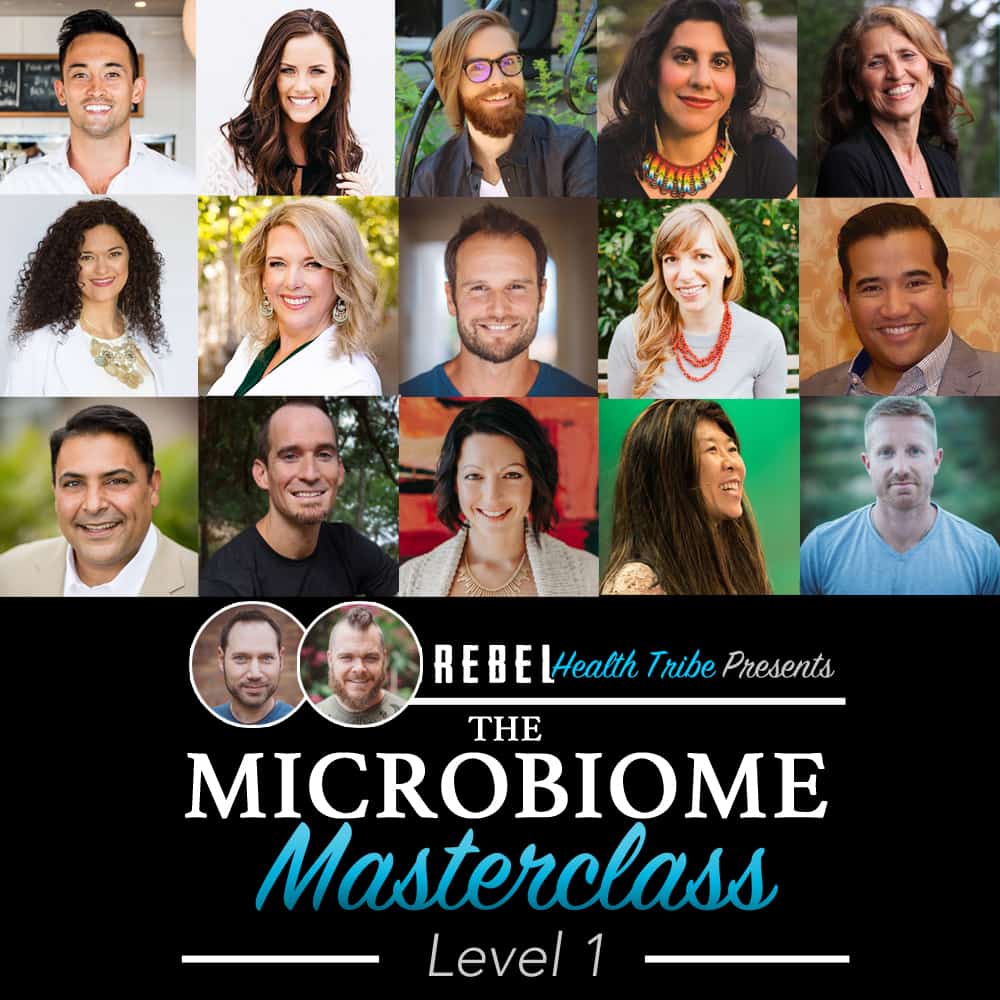
Gut Microbiome & Digestion Products
-
-
-
-
$119.98
ZenBiome™ Sleep is formulated to help clients deal with occasional...
Get Social
Recent Podcasts
Recent Courses
Toxicity & Detoxification Masterclass 2024
The toxicity and Detoxification Masterclass covers a wide
Brain & Nervous System Masterclass 2024
19 Leading Experts Share Cutting-Edge Science, Effective Practices,
Autoimmune Masterclass 2024
Autoimmune Masterclass brings together 17 of the world’s
Toxicity & Detoxification Masterclass
The toxicity and Detoxification Masterclass covers a wide
Get the RHT Newsletter
Be the first to get access to special offers, new podcasts, courses, products and events from Rebel Health Tribe.
Facebook
Twitter
Pinterest
LinkedIn
Reddit
WhatsApp
Telegram
StumbleUpon
-
HistaHarmony™
$46.99If you get fatigued, flushed, or foggy after...
-
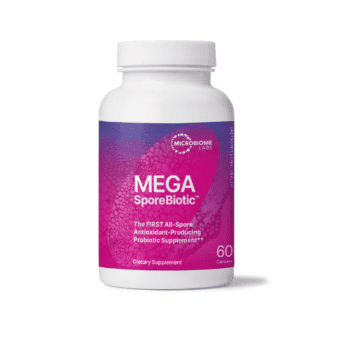
- Select options This product has multiple variants. The options may be chosen on the product page
MegaSporeBiotic
$59.99 – $176.95MegaSporeBiotic™ is a 100% spore-based, broad-spectrum probiotic shown...
-
MegaSporeBiotic For Kids Gummies
$39.00MegaSporeBiotic™ Gummies are a 100% spore-based proprietary probiotic...
-
MegaMucosa
$59.99MegaMucosa is the first complete mucosal support supplement...
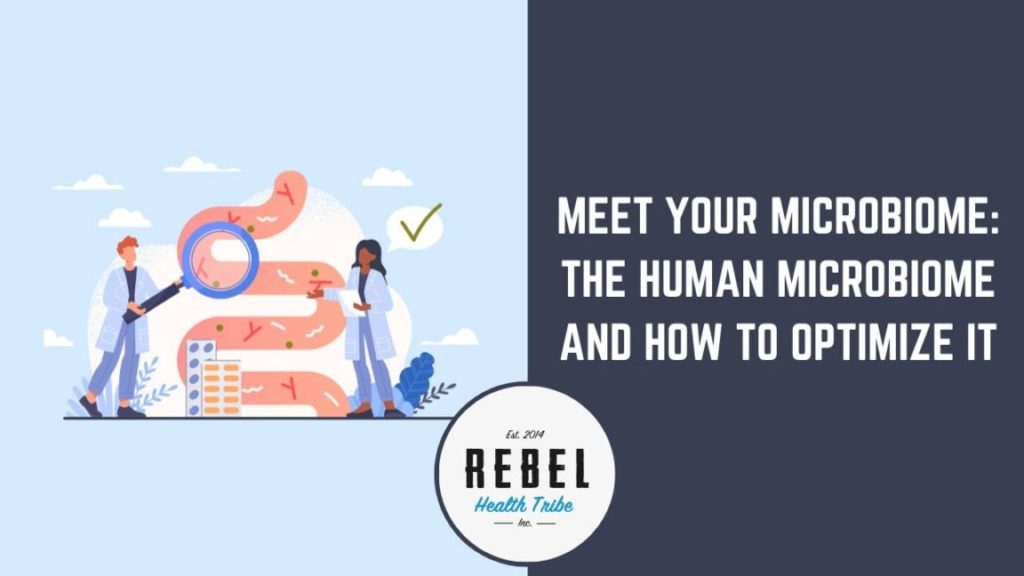
Meet Your Microbiome: The Human Microbiome and How to Optimize It
Meet Your Microbiome: The Human Microbiome and How to Optimize It On and in the average human, there reside approximately
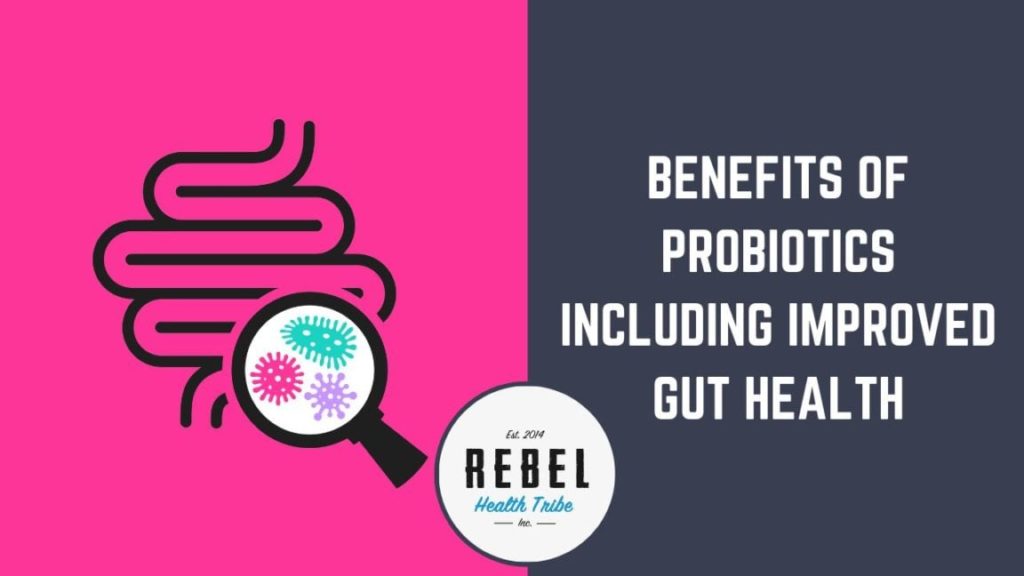
Benefits of Probiotics Including Improved Gut Health
Benefits of Probiotics Including Improved Gut Health “Probiotics” has become quite the buzzword – with countless products and supplements proudly

Gut Microbiome Health and the Gut-Immune System Connection: Part 2 Lower GI
Gut Microbiome Health and the Gut-Immune System Connection: Part 2 Lower GI The diverse community of microbes in your digestive

Gut Microbiome Health and the Gut-Immune System Connection: Part 1 Upper GI
Gut Microbiome Health and the Gut-Immune System Connection: Part 1 Upper GI The message is out: gut health is critical





